 The first of four magnitudes is said to have the same ratio to the second, which the third has to the fourth, when any equimultiples whatsoever of the first and third being taken, and any equimultiples whatsoever of the second and fourth ; if the multiple... The first of four magnitudes is said to have the same ratio to the second, which the third has to the fourth, when any equimultiples whatsoever of the first and third being taken, and any equimultiples whatsoever of the second and fourth ; if the multiple...  Euclidian Geometry - Page 157by Francis Cuthbertson - 1874 - 349 pagesFull view Euclidian Geometry - Page 157by Francis Cuthbertson - 1874 - 349 pagesFull view - About this book
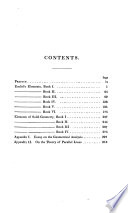 | Euclid, Dionysius Lardner - Euclid's Elements - 1828 - 542 pages
...Propositions are introduced by SIMSON. PROPOSITION A. THEOREM. (480) If the first of four magnitudes have the same ratio to the second which the third has to the fourth ; then, if the first be greater than the second, the third is also greater than the fourth ; and if... | |
 | Euclid, Robert Simson - Geometry - 1829 - 548 pages
...said to have a ratio to one another, when the less can be multiplied so as to exceed the other. V. The first of four magnitudes is said to have the same ratio to the scoond, which the third has to the fourth, when any equimultiples whatsoever of the first and third... | |
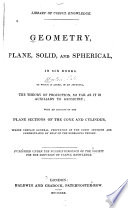 | Pierce Morton - Geometry - 1830 - 584 pages
...having the same ratio to two others В and D, of the same kind with the former two respectively. Def. 7. The first of four magnitudes is said to have the same ratio to the se* By the word " corresponding" here used, it U R«TÍy iat«*nded to point out the fact of there... | |
 | Euclid - Euclid's Elements - 1833 - 216 pages
...ought to be defined, is still a subject of controversy among geometers. Euclid defines them thus : The first of four magnitudes is said to have the same...the second, which the third has to the fourth, when any equi-multiples whatsoever of the first and third being taken, and any equimultiples whatsoever... | |
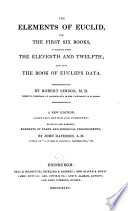 | Robert Simson - Trigonometry - 1835 - 544 pages
...said to have a ratio to one another, when the less can be multiplied so as to exceed the other. y. The first of four magnitudes is said to have the same ratio to the second, that the third has to the fourth, when any equimultiples whatsoever of the first and third being taken,... | |
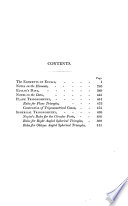 | Euclid - 1835 - 540 pages
...said to have a ratio to one another, when the less can be multiplied so as to exceed the other. y. The first of four magnitudes is said to have the same ratio to the second, that the third has to the fourth, when any equimultiples whatsoever of the first and third being taken,... | |
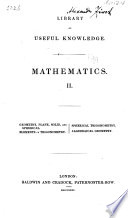 | Mathematics - 1835 - 684 pages
...equal to, or less than the corresponding magnitude of the other ; and conversely (ax. 1, 2, 3, 4).* • "The first of four magnitudes is said to have the same ratio tu the second, which the third has to the fourth, when any equimultiples whatsoever of the first and... | |
 | Mathematics - 1836 - 488 pages
...oft as there are units in the product of these two numbers. IV. If the first of four magnitudes has the same ratio to the second which the third has to the fourth, and if any equimultiples whatever be tcriken of the first and third, and any whatever of the second... | |
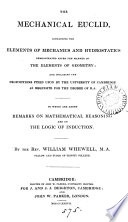 | William Whewell - 1837 - 226 pages
...GEOMETRY. ELEMENTS or GEOMETRY. EUCLID, Books *i, *II, *III, IV. Book v. *Definition of Proportion. The first of four magnitudes is said to have the same...the second which the third has to the fourth, when^ — any eq'wi-multiples whatsoever of the Jirst and third being taken, and any equi-multiples whatsoever... | |
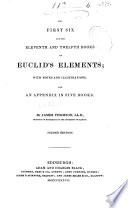 | Euclid, James Thomson - Geometry - 1837 - 410 pages
...the sixth, is of the fourth D. If, therefore, &c. PROP. IV. THEOR. IF the first of four magnitudes have the same ratio to the second which the third has to the fourth ; then any like multiples whatever of the first and third have the same ratio to any like multiples... | |
| |